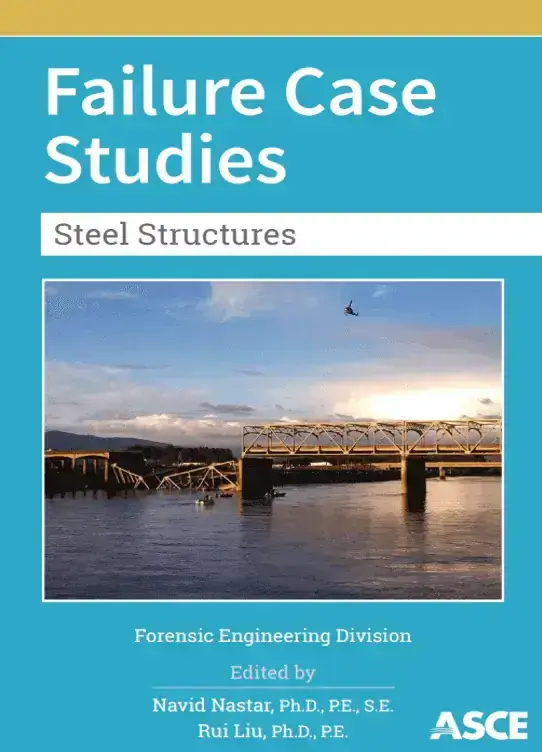Failure Case Studies: Steel Structures, provides case studies of failures observed in steel structures between 1970 and 2013. Designed to promote learning from failures by disseminating information regarding previous failure cases,
each case study is comprised of a summary description of a documented civil engineering failure followed by lessons learned from the failure and references for further study. Case studies include
– West Gate bridge collapse – University of Washington stadium collapse – Damage to steel moment resisting frames during the Northridge Earthquake
– Colorado State Route 470 overpass collapse – Pittsburgh Convention Center expansion joint failure – I-35W bridge collapse
– Elliot Lake Algo mall collapse; and – Skagit River Bridge collapse.
This book supplies a summary of the published findings from eight steel structure failure investigations and a valuable collection of references that can be used by civil engineering students and practicing engineers to improve their failure literacy.
Failures in Civil Engineering: Structural, Foundation and Geo-environmental Case Studies was first published by ASCE in 1995. Edited by Robin Shepherd and
J. David Frost, the publication collected short descriptions and relevant references for 43 failure case studies.
Engineering professors and students can use these case studies as the basis for class discussions, a starting point for further research, and a reminder that learning from past failures can avoid similar failures in the future and lead to improved engineering practices. Practicing engineers can use the book as a continuing education resource to improve their practice and to avoid similar failures.

